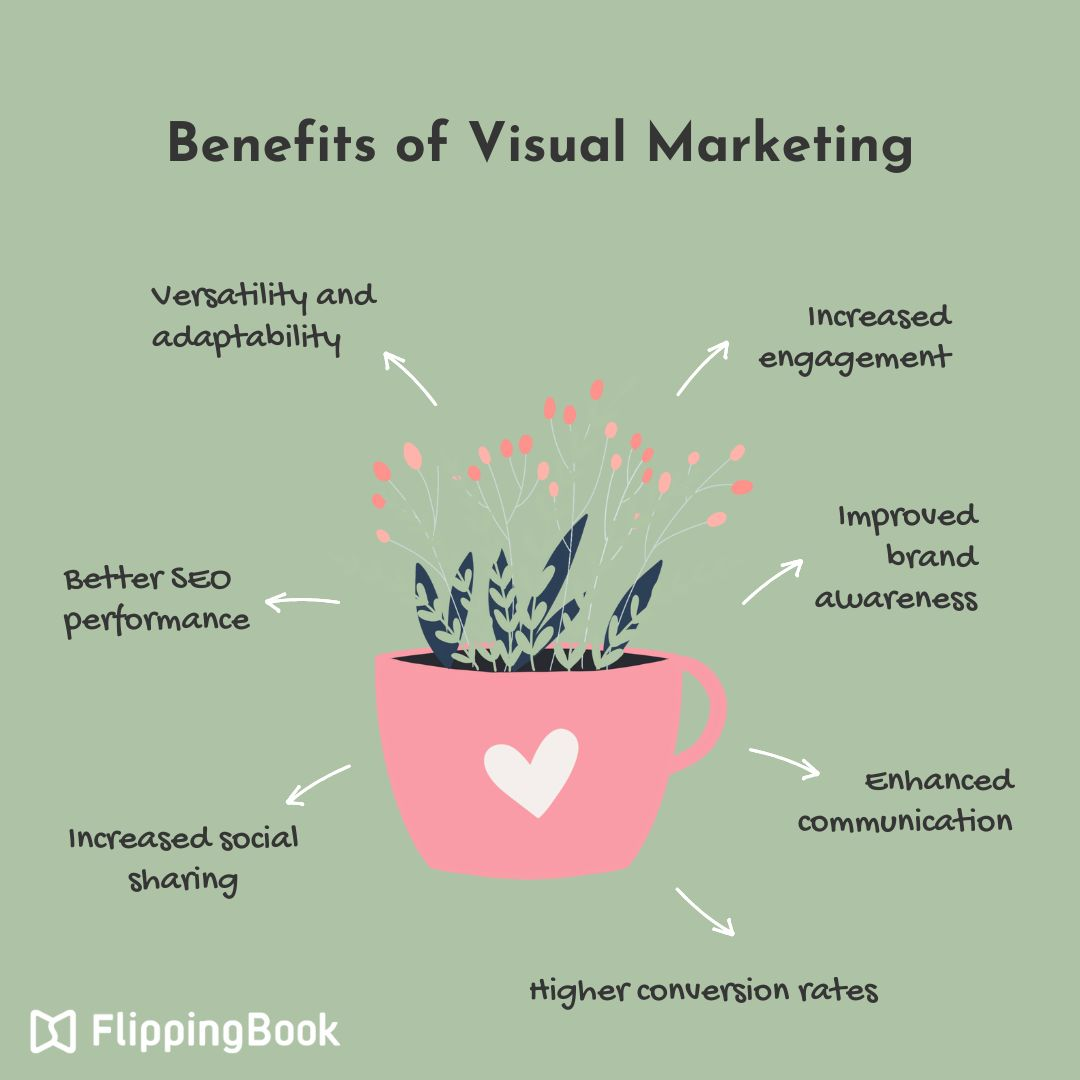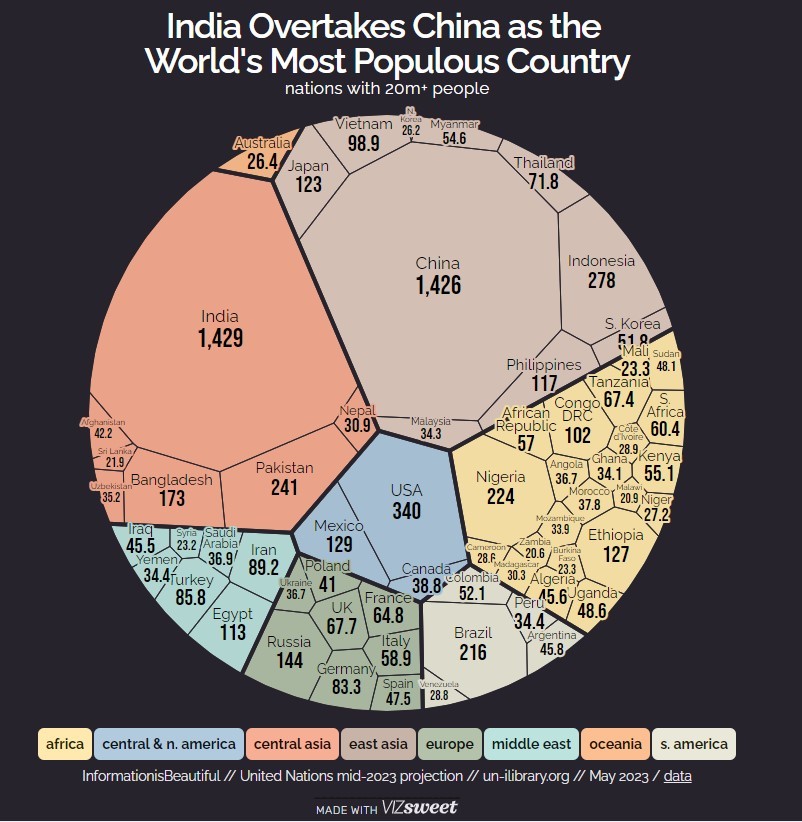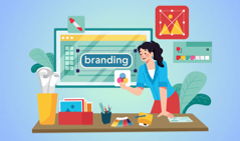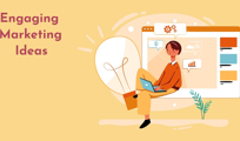Visual content has power, it’s pleasing to the eye, entertaining and attention-grabbing, it evokes emotion and creates a connection with the audience. Visually rich media tends to be much more shareable and interesting than plain text, so visual content often gets spread more virally, allowing you to extend the reach and effectiveness of your content.
Visual content plays a significant role in modern marketing. Therefore, it’s no surprise that 85% of marketers say visual content is a core part of their marketing strategy.
If you learn how to generate high-quality visual content that truly resonates with people and promote it regularly, you can stand out and achieve your business goals in the most efficient way. In our guide, we define what visual marketing is, talk about its benefits and main types, and then share engaging visual marketing content ideas for you to get inspired to use in 2026. Let’s dive in!
What is Visual Marketing?
Visual marketing is a marketing strategy that implements visual elements to communicate messages, engage audiences, and promote products or services. It involves using images, videos, graphics, infographics, diagrams, and other visual content to attract and captivate the target audience.
Overall, visual content marketing plays a crucial role in capturing the attention of clients in today's digital landscape and is an essential component of a successful marketing strategy.
What are the Benefits of Visual Marketing?

Visual marketing offers many benefits for businesses looking to enhance their marketing efforts and connect with their clients. Here are a few key benefits to keep in mind:
🚀Increased engagement: visual content is great in enticing viewers and driving their attention compared to text-only content. Visuals are easier to consume and can convey information quickly, making them more appealing to people.
🚀Improved brand awareness: using visual elements consistently in marketing campaigns helps reinforce brand identity and recognition. Memorable visuals can leave a lasting impression on viewers and help differentiate a brand from competitors.
🚀Enhanced communication: visuals can convey complex messages and emotions better than text alone. Visual content can help businesses communicate their brand story, showcase product features, and connect with their audience on a deeper level.
🚀Higher conversion rates: visuals can drive action and motivate viewers to take desired actions, such as making a purchase or signing up for a newsletter. Well-crafted visual content can lead to higher conversion rates and improved ROI for marketing campaigns.
🚀Increased social sharing: visual content is highly shareable on social media platforms, leading to increased visibility and reach for businesses. Rich visuals are more likely to be shared by users, helping expand the brand's online presence and attract new followers.
🚀Better SEO performance: visual content can improve SEO performance by increasing user engagement, reducing bounce rates, and enhancing the user experience on websites. Search engines also value high-quality visual content, making it an important factor in optimizing search rankings.
🚀Versatility and adaptability: visual marketing can take various forms, including images, videos, infographics, animations, and more. This versatility allows businesses to create diverse content that resonates with different audience segments across various platforms.
Types of Visual Content

Businesses can leverage various types of value-driven visual content to empower their visual marketing strategy and entice their clients. Some of the most common types of visual content include:
⭐Images
Images are the pillar of visual content and they are still the most common type of visual marketing. Make sure to use high-quality photos and graphics that fit your brand’s style and showcase your business at its best. Such images and photos help relay a sense of credibility, intimacy, and inspiration for brands.
⭐Videos
Video content has become the star of visual marketing, as it’s used by over 90% of businesses, according to the yearly report by Wyzowl. Video is highly engaging and versatile, allowing businesses to tell stories, demonstrate products, share testimonials, and connect with their audience on a deeper level. Types of videos include explainer videos, product demos, interviews, tutorials, and more.
⭐Interactive content
Interactive visual content such as flipbooks, quizzes, polls, and interactive infographics can attract users and encourage them to engage with the brand. Interactive content can increase dwell time, boost engagement, and provide valuable insights into audience preferences.
⭐Infographics
Infographics combine text and visuals to present complex information in a visually appealing and easy-to-understand format. Infographics are perfect for showcasing data, statistics, processes, and comparisons.
⭐GIFs
GIFs are short looping animations that can add humor, personality, and visual interest to content. GIFs are popular on social media platforms and can help grab attention and convey emotions effectively.
⭐Memes and Comics
Businesses can use memes and comics to connect with their audience in a lighthearted and relatable manner, but it's important to ensure that the content aligns with the brand's tone and values. Plus, creating memes and comics helps brends stay relevant as they follow the latest cultural and marketing trends and hop in at the right time with their new visual content.
⭐Presentations
Slide presentations are a visual content format that can be used for webinars, conferences, sales pitches, and educational purposes. Tools like PowerPoint, FlippingBook, and Google Slides allow businesses to create beautiful presentations with text, images, and multimedia elements.
⭐User-generated content
User-generated content (UGC) includes photos, videos, reviews, and testimonials created by customers or fans of a brand. UGC can be a powerful form of visual content that builds trust, authenticity, and social proof for businesses.
By incorporating a mix of these visual content types into their marketing strategies, businesses can create diverse and enticing content that resonates with their audience, drives traffic and sales, and achieves their marketing goals.
Engaging Visual Marketing Ideas to Use in 2026
Now that we’ve covered the main types and advantages of visual content, let’s tap into the ways to use visual content in your marketing to spread your message or convey ideas and emotions. We hope that these ideas will help you create a unique visual atmosphere with your content.
#1 Data Visualization
We’ve all been there—imagine you wanted to share some exciting research data with others, but perceiving raw numbers in a presentation was hard so no one could get as enthusiastic as you. Don’t worry, creating data visualizations can help you overcome this issue and rock at presenting your data!
In 2023, data visualization charts emerged as the most prevalent and widely used type of visual content, and their popularity is expected to grow even further in 2026.
Here’s an example of neat-looking data visualization from Information is Beautiful: the latest United Nations mid-year predictions for Population by Country.

#2 Flipbooks
A great way to create interactive visual media and combine videos, GIFs, and images in one piece of content is to make a digital flipbook. Flipbooks allow you to provide an immersive reading experience to your clients and compel them with a fresh look, smooth page flip effect, and tons of valuable content inside. Like this amazing flipbook, made with FlippingBook, an online flipbook creator:
What’s more, flipbooks are easily shareable: you can send a link to them via email or messenger, embed them into your website or blog (as we did above), or post on social media with a neat preview.
#3 Idea or Concept Visualization
A new idea or a complex concept are not easy to describe and explain. But if you put them in a visual form, they can become very appealing to your audience.
The best example here is NASA's Eyes on Asteroids. This interactive visualization allows users to explore the asteroid belt and see the real-time positions of asteroids in our solar system. The visualization features a 3D solar system model, allowing users to zoom in and out to explore asteroids and other celestial bodies.

#4 Flowcharts
Flowcharts help you visualize processes and instructions. If you want to make your feature landing pages, ‘how-to’ posts, and help center articles look sleek and easy to understand, convert your text instructions into flowcharts. Plus, be creative about what info you can deliver in the form of a flowchart. For instance, see how an article on Impostor syndrome turned into an exciting flowchart test and advice on how to deal with impostor syndrome. Who could resist taking the test right away? We couldn’t!

#5 Presentations
Nowadays, presentations and pitches can be interactive, available on any device, and (what’s maybe the most important) compelling and inspiring for your colleagues, clients, and partners. This is all thanks to a vast array of presentation-making tools that allow you to enhance your content and elevate it to the next level. Here’s where FlippingBook can come to your help once again. By creating your presentations and pitch decks with FlippingBook, you can turn your plain PDF into an interactive digital publication with stunning visuals and enticing interactive elements. What's more, you can set the pages of your document to flip automatically for a seamless viewing experience during your presentation.
#6 Animated Infographics
If you combine infographics and video you get a new powerful type of visual marketing content—animated infographics. They mix elements of traditional infographics, such as charts, graphs, and illustrations, with motion graphics and animation effects to create dynamic and visually appealing content. It’s brief, simple, and one of the most direct ways to deliver your idea in an entertaining fashion.
For instance, if you have ‘Top 1o’ articles or instructions, they can be a good candidate to become an animated infographics listicle. Such a list will be very impressive as it’s pretty short, can be digested easily, and keeps your audience hooked till the very end. Like this one, with Winter energy saving tips:
#7 Interactive Product Demos
An interactive product demo is a self-guided walkthrough of software that allows users to actively engage with the product through hands-on interaction. This can include features such as clickable buttons, drag-and-drop functionality, animations, simulations, and other interactive elements that allow users to explore the product's functionality in a more engaging and immersive manner.
Interactive demos are still quite a new approach but they already get 3x the engagement compared to plain old video demos. If you develop different tools or software, you can become one of the pioneers of using interactive product demos and reap many benefits from them. To ensure your interactive demos deliver a smooth user experience, consider using a usability testing tool.
#8 Embedded Blog Post Videos
Blogs and video content are a perfect match. Embedding videos in a blog post can boost SEO and increase time spent on your site. Plus, sharing your videos with the readers of your blog is an amazing opportunity to enhance engagement, boost brand exposure, and potentially get new conversions. People often head to a blog post for information, and videos can be a valuable tool for conveying knowledge in a quick, compelling, and memorable way.
Wrap up
Visual marketing offers a wide range of benefits that can help businesses communicate their message, captivate their audience, and drive results in today's competitive digital landscape. Incorporating visual elements into marketing strategies can help businesses stand out, connect with consumers, and achieve their goals more effectively. We hope that some of the ideas from our post will become a part of your marketing strategy in 2026, good luck!




